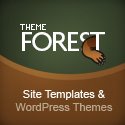As of version 5 Bryce does not support reflective mapping, Bryce's reflection channel sets the intensity and areas on an object that reflection will occur. Not what is actually reflected on the object. So applying a map directly to the reflection channel even if the Reflection Mapping mode is used will only determine which areas of the object will or won't have reflective properties, using the grayscale color information in the texture window's alpha channel. The refection map can be used in the diffused channel utilizing the Reflection Map mapping mode, but then it is limited to the map basically being the coloring for the surface material, and does not produce a very convincing reflective surface. As can be seen in the render below.
But without any type of reflection mapping, bare scenes can seem rather dull.
So a work around to create better reflections in Bryce, and determine what is reflected on the object, a reflective environment can be made. This is done by creating an object then applying the reflection map to it as a texture, then building the scene inside the object. For the most part a sphere works best for the environment object, since it usually will distribute the reflection map more evenly on the reflective objects.
Create a sphere and enlarge it enough so it engulf the scene and also the camera to be used for the render.
For best results a Boolean operation will need to be done to hollow out the sphere. This will make the refection map face the right side of the polygon normals. So duplicate the sphere an scale it a little smaller so it's inside the original sphere. And do a subtract Boolean making the larger sphere positive and the smaller sphere negative. Also enable the Transfer Material of Negative Boolean, on the small negative sphere. This will transfer the refection map from the small sphere to the inside of the big sphere.
Then select and Group the two sphere, which performs the Boolean operation.
Then with the group selected go to the Materials Lab and apply the Refection Map as a Texture. Theses are the setting I generally use, you may find others suit your needs better. I use the texture in the Ambient Channel along with the diffused.
Since the scene is inside of the environment sphere group, it will need to have lighting set-up if the sun/moon is the only light source for the scene. Here's the scene with lighting set-up inside the environment sphere.
Using the ambient channel on the environment sphere will also help illuminate the scene.
The background can be cleared by adding a negative cube to the rear half of the environment group.
The background can remain blank, or a new back ground scene can be built without effecting the way the front of the objects reflect the environment sphere.

0 commentaires:
Enregistrer un commentaire